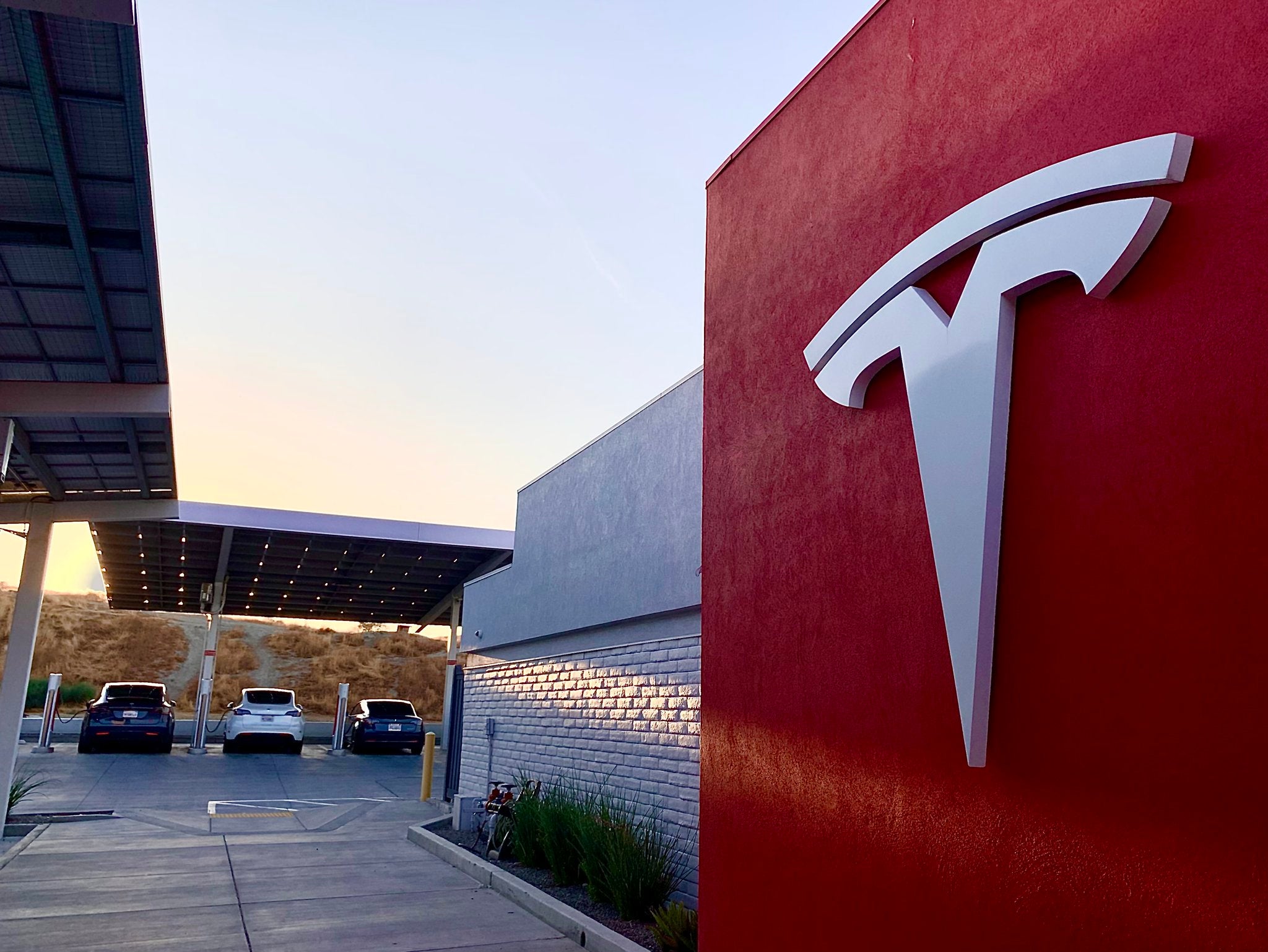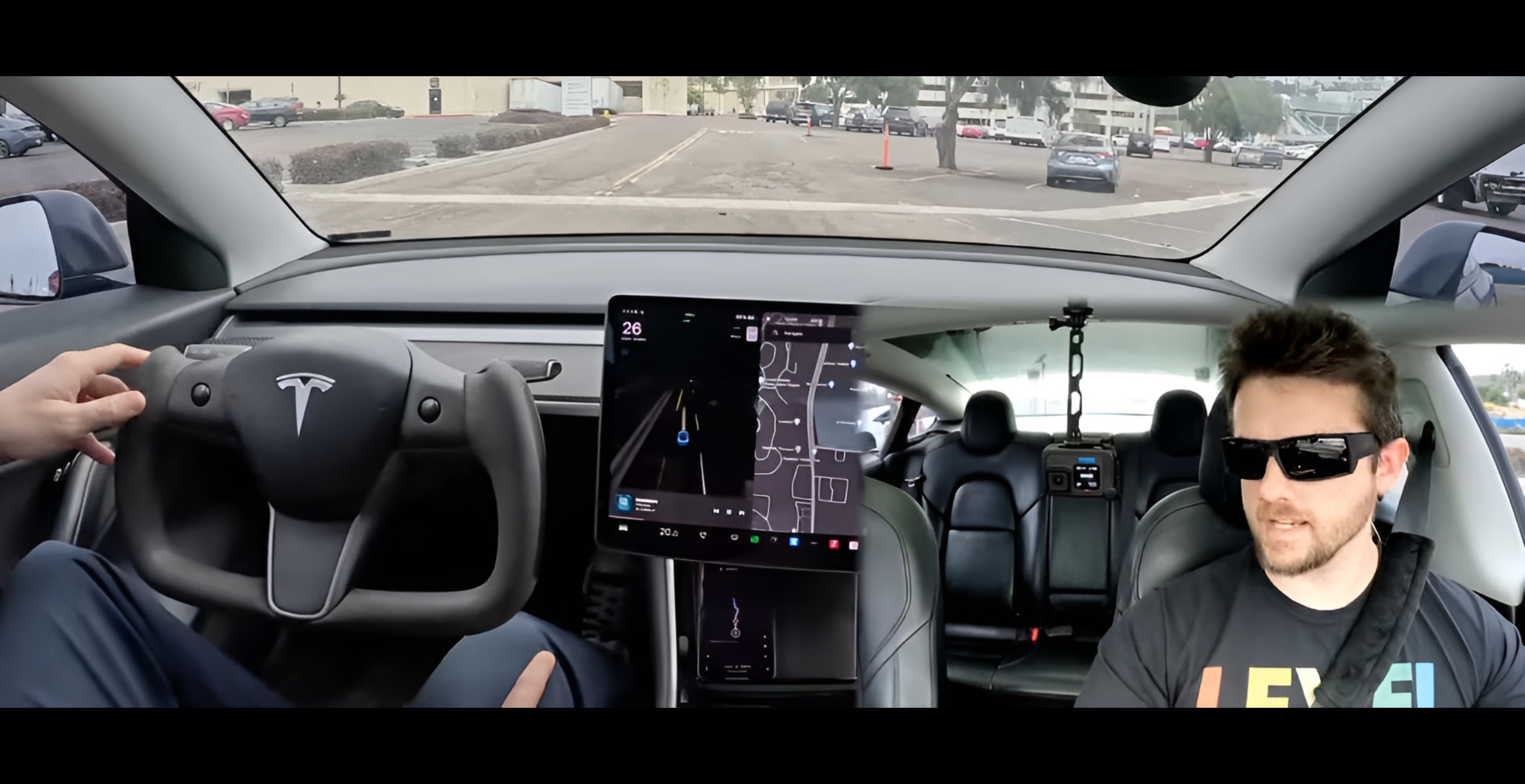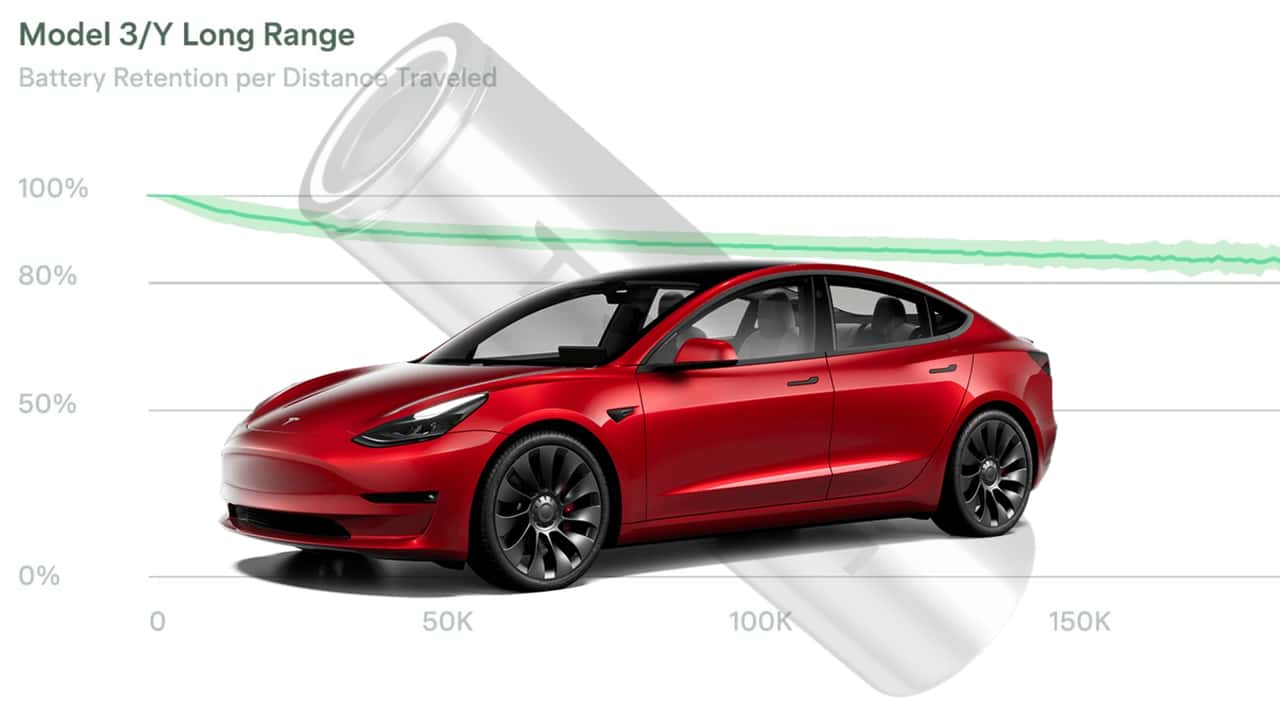
How to Most Efficiently Road Trip in a Tesla
Cześć, nazywam się Alan Meyer z TesCalendar (znajdź mnie na X @TesCalendar1) i z dumą piszę swój pierwszy wpis na blogu dla Jowua! Jeśli chcesz, zajrzyj do mojego sklepu (https://tescalendar.com/shop)! Każde zamówienie idzie na walkę ze zmianą klimatu poprzez sadzenie drzew! Teraz do bloga…

Przejdź do sekcji
Ewolucja podróży samochodem Tesla
Tutaj, w 2024 roku, podróżowanie Teslą stało się powszechne. To naprawdę niesamowite, biorąc pod uwagę, że zaledwie 12 lat temu nie istniała ani jedna szybka ładowarka prądu stałego (DCFC). W ciągu ostatnich 12 lat Tesla zbudowała ponad 50 000 Superchargerów (na całym świecie), dzięki czemu podróżowanie Teslą jest możliwe niemal wszędzie!
Dzisiaj możesz po prostu wsiąść do Tesli, wpisać lokalizację, do której chcesz się udać, i już. Nawigacja Tesli automatycznie zaplanuje trasę do celu, dodając przystanki na ładowanie Supercharger, jeśli miejsce docelowe znajduje się poza zasięgiem. To absolutnie niesamowita funkcja NIEZBĘDNA do masowej sprzedaży pojazdów elektrycznych.
Jednak nie jest to najskuteczniejsze narzędzie do używania na dłuższych trasach. Oto, jak możesz sprawić, aby Twoje trasy w Tesli były o wiele bardziej wydajne:
1. Pobierz zewnętrzny planer tras
Chociaż nawigacja doprowadzi Cię niemal wszędzie bez zbędnego zastanawiania się czy dodatkowej pracy, to z całą pewnością nie będzie to najefektywniejszy sposób podróżowania do celu, ponieważ nawigacja Tesli nie posiada wielu funkcji, takich jak:
- Niestandardowy stan naładowania (SOC) miejsca docelowego
- Pożądany stan SOC przybycia sprężarki
- Prędkość podróży
- Niezależnie od tego, czy chcesz zrobić kilka dłuższych czy krótszych postojów
- Inne opcje sieci ładowania niż Tesla
- Maksymalny limit SOC sprężarki
- Dodatkowy ciężar w kabinie (ładunek)
Właśnie tutaj A Better Route Planner (ABRP, strona internetowa i/lub aplikacja) naprawdę pomaga zaplanować podróż w sposób najbardziej efektywny i dostosowany do Twoich potrzeb!
Pamiętaj, aby użyć ich strony internetowej lub aplikacji i pobawić się ustawieniami. Możesz łatwo zmienić ustawienia (wiele z nich wymienionych powyżej) i zobaczyć, jak wpłynie to na całkowity czas podróży do miejsca docelowego.

2. Przejedź się krzywą ładowania Tesli
Jedną rzeczą, o której naprawdę należy pamiętać, przechodząc z Supercharger na Supercharger, jest krzywa ładowania pojazdu.
Poniżej przedstawiono przykład krzywej ładowania Tesli Model Y Long Range ładowanej na ładowarce Tesla Supercharger V3 (Źródło zdjęcia: EVKX.com).
Jak widać, szczytowa stawka ładowania wynosi 5–30% i od tego momentu drastycznie spada.
Aby zminimalizować czas spędzony przy Superchargerze, celem jest zawsze dotarcie do Superchargera z najniższym możliwym stanem naładowania, nie wyczerpując przy tym energii (oczywiście).

3. Zoptymalizuj swój czas przestoju
W przypadku dłuższych podróży możesz jechać wiele dni i zatrzymać się na noc w hotelu, aby odpocząć. To świetny czas na naładowanie EV przez noc, aby rano obudzić się z pełnym naładowaniem!
Najlepszym sposobem na znalezienie hotelu z ładowaniem pojazdów elektrycznych jest skorzystanie z aplikacji/strony internetowej PlugShare.PlugShare działa od 2009 r., zbierając dane z milionów odpraw. Są niesamowitym źródłem informacji o wszystkich opcjach rozliczeń miejsc docelowych i DCFC!
Jeśli zaplanujesz wszystko z wyprzedzeniem, możesz ustalić, w którym mieście chcesz spędzić noc lub ile godzin chcesz jechać, zanim zarezerwujesz hotel.
Po ustaleniu tego możesz poszukać na PlugShare hoteli z punktami ładowania w miejscach docelowych.
OSTRZEŻENIE: koniecznie przeczytaj recenzje tej ładowarki na PlugShare zanim na niej polegasz. Ładowarki hotelowe są znane z tego, że nie są zadbane i często mają problemy. Przeczytanie kilku recenzji wiele znaczy.
Jeśli nie planujesz z wyprzedzeniem, nadal możesz łatwo skorzystać z tej okazji do ładowania! Ponownie, sprawdź miasto, w którym chcesz się zatrzymać na PlugShare i postępuj zgodnie z tą samą procedurą, co powyżej!

Moje Ohio do Kolorado Rodzinna wycieczka samochodowa
Oto przykład z niedawnej podróży samochodem, którą odbyliśmy z żoną z Ohio do Kolorado.
Podczas jednego z naszych pobytów dostaliśmy hotel LaQuinta za jedyne 74 USD, który miał darmową ładowarkę Tesla destination! Przyjechaliśmy z 3% i dodaliśmy 71 kWh podczas noclegu (12:00-7:00).
Należy pamiętać, że w promieniu 3 mil znajduje się stacja Supercharger, więc w razie jakichkolwiek problemów z ładowarką bez problemu mogliśmy się tam udać.
Ta energia kosztowałaby ~25$ w Supercharger w okolicy. Dostaliśmy też darmowy lód (wartość 5$) i darmowe śniadanie (wartość 20$). To jest 50$ wartości, więc myślę, że nasz „prawdziwy” koszt pobytu w hotelu wyniósł zaledwie 24 dolary!
Wszystkie wymienione rzeczy były potrzebne i i tak zostałyby zakupione, ale to tylko kolejny sposób, w jaki pojazdy elektryczne pomagają oszczędzać pieniądze (poza oczywistymi oszczędnościami na benzynie).
4. Wybierz idealną ładowarkę dla Twój Sytuacja
Jak widać w przykładzie powyżej, Superładowarki nie są jedynym rozwiązaniem na dalekie podróże. Istnieją również inne przykłady tego!
Tak wiele osób uważa, że superszybkie ładowanie EV jest wszędzie niezbędne, ALE to po prostu nieprawda! Podczas naszej ostatniej podróży samochodem do Kolorado, naprawdę mogłem zobaczyć kilka przykładów idealnej ładowarki w odpowiednim miejscu.
1. Stacja ChargePoint 62 kWh w pobliżu Gateway Arch w St. Louis, MO.:
Zwiedzaliśmy Park Narodowy Gateway Arch przez nieco ponad godzinę i udało nam się w tym czasie naładować baterię do pełna!
Udało nam się pominąć przystanek na stacji Supercharger robiąc to, już planowaliśmy pójść na łuk!
Nie tylko było to wygodne, ale stawka za tę ładowarkę wynosiła 0,25 dolara, podczas gdy stawka za Supercharger znajdującą się nieco dalej wynosiła 0,35 dolara!

2a. Opłata za pobyt w hotelu:
Zatrzymałem się w kilku hotelach z ładowaniem od 7 kW do 12 kW. We wszystkich udało mi się naładować baterię do pełna, kiedy się obudziłem! Zobacz więcej informacji o jednym z hoteli powyżej.

2b. Pola namiotowe (NEMA14-50):
Zatrzymaliśmy się na 3 różnych kempingach (kempingi pod namiotami) w tej podróży mogliśmy ładować urządzenia za pomocą gniazdka 50A.
Kempingi są zaprojektowane tak, aby zasilać nieefektywne klimatyzatory RV, które zużywają dużo energii! Ładowanie pojazdu elektrycznego zużywa w rzeczywistości bardzo podobną ilość energii!
Ładując z mocą 7-8 kW, znów udało nam się naładować akumulatory w ciągu jednej nocy!

3. I tak - oczywiście Superchargery!
W pobliżu autostrad potrzebne są superładowarki, a sieć jest już niesamowita.

Zalety sprężarek (lub większości DCFC):
Tak naprawdę uwielbiamy zatrzymywać się w Superchargers, ponieważ zmusza to do wybrania miejsca, w którym zjemy lunch/kolację.
Jak większość par, moja żona i ja zawsze mamy problem z wyborem miejsca, w którym zjemy! To zostało rozwiązane głównie podczas naszej podróży samochodem do domu z Kolorado!
- W piątek wieczorem zatrzymaliśmy się w Supercharger w Kansas niedaleko Qdoba. Tam jedliśmy!
- W sobotę w południe zatrzymaliśmy się w SC w Missouri w pobliżu stacji benzynowej. Zjedliśmy tam przekąskę i pojechaliśmy dalej.
- W sobotę wieczorem SC był w Culver's w Indianie. Ponownie, tam jedliśmy kolację!
To było takie proste! Bez dyskusji i kłótni! Teraz, to nie działa w 100% przypadków, ALE u nas działa w około 90% przypadków.
Podróż samochodem elektrycznym czy samochodem z silnikiem spalinowym
Jak już kilkakrotnie wspominaliśmy, właśnie wybraliśmy się na niesamowitą wycieczkę samochodową do Kolorado. Podczas tej podróży zebrałem sporo danych dokumentujących nasze doświadczenie z podróżą samochodem Tesla.
Dane z podróży samochodem Tesla Model Y 2024 po Kolorado:
- Łączna liczba mil: 4249
- Zużyta energia: 1196 kWh
- Średnie zużycie: 281 Wh/mi
- Całkowity koszt ładowania: 257,30 zł
- Koszt za milę: 6,06¢
Należy pamiętać, że dodaliśmy 462 kWh GRATIS za pośrednictwem ładowania w hotelach i na kempingach.
Czy podróżowanie samochodem elektrycznym jest droższe od podróżowania samochodem z silnikiem spalinowym?
Wiele osób mówiło mi, że podróżowanie EV jest teraz droższe niż jazda samochodem z silnikiem spalinowym. Zakładając średnią krajową 3,45 USD/galon benzyny i 35 mpg dla porównywalnej wielkości crossovera z silnikiem spalinowym, podróż kosztowałaby 10 ¢/milę.
Biorąc pod uwagę nasz sposób podróżowania, właśnie odbyliśmy tę trasę za 6 centów za milę naszym Teslą Model Y. To aż o 40% niższy koszt podróży naszym Modelem Y!
Czy EV RWyzwalanie obciążenia Zajmować więcej czasu niż jazda samochodami ICE Road Trip?
Wiele osób mnie o to pytało „tak, ale ile czasu spędziłeś na ładowaniu!?!?”
Zatrzymaliśmy się przy 17 szybkich ładowarkach DC (Superchargers i ChargePoint) na średnio 20 minut każdy.
W tym czasie, spędziliśmy bardzo mało czasu czekając na samochód, ponieważ zazwyczaj większość tego czasu zajmowało nam skorzystanie z toalety i zjedzenie kolejnego posiłku.
Skorzystaliśmy także z 10 ładowarek docelowych, co nie kosztowało nas nic dodatkowego czasu.
Więc średnio nie zajęło to więcej czasu niż w ICE Road Tripping. Ale w porównaniu do naszej poprzedniej podróży na Florydę i z powrotem, Ten średni czas szybkiego ładowania jest w rzeczywistości o 3 minuty dłuższy na każdym przystanku.
Ponieważ podczas wyprawy na Florydę korzystaliśmy niemal wyłącznie z ładowarek V3 Supercharger, a podczas wyprawy do Kolorado korzystaliśmy jedynie ze 1/2 ładowarek V2.





Zostaw komentarz
Ta strona jest chroniona przez hCaptcha i obowiązują na niej Polityka prywatności i Warunki korzystania z usługi serwisu hCaptcha.